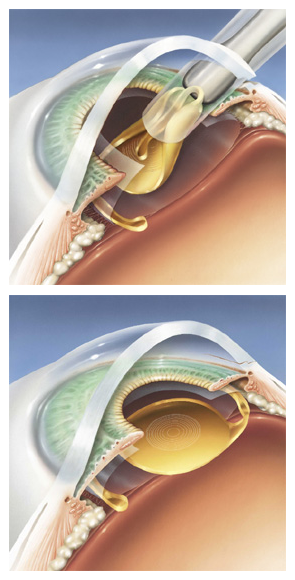Lens Replacement Surgery for Presbyopia.
At iLaser our treatment options for Presbyopia involve surgery in the form of cataract or clear lens extraction, at a day surgery facility using the latest surgical techniques of femto laser lens extraction or phacoemulsification.
Surgery usually involves removal of the crystalline lens which may or may not have developed cataract (cloudiness). Sometimes the lens is not removed at all, but rather an intraocular contact lens (ICL) is implanted. This technique is suitable for short sightedness as an alternative to refractive laser surgery and is completely reversible unlike laser.
After the lens is removed from the eye, different types of Intra Ocular Lenses (IOLs) are implanted according to your visual needs. Most commonly this involves a trifocal IOLs, but occasionally other types of technologically advanced IOLs are used, with a different optical design. These advanced IOLs are called extended depth of focus (EDOF) lenses and allow very clear far distance and intermediate distance vision with perfect clarity. Spectacles may still be required for reading small print if there are inadequate lighting conditions. Only one eye is operated on initially and the second has the same procedure at least 4 weeks after.
Full visual rehabilitation can usually be achieved 6 weeks after the first eye is operated on but, usually the vision is excellent within a couple of days after surgery. The procedures involve minimal downtime, usually of 2 -3 days after each surgery. All going well, you will not need to wear any glasses at all after the visual rehabilitation period is complete.



